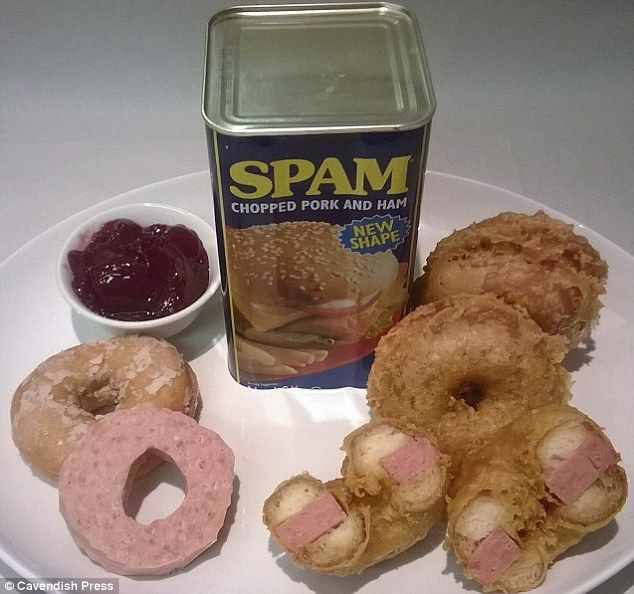National Doughnut Day Sandwiches Spam Inside: What The Two American Staples Have In Common

Would you ever try a deep-friend Spam doughnut? In honor of National Doughnut Day, John Clarkson of Preston, Lancashire, in England created the new meat-filled menu item at his fish and chip shop, and it’s become so popular that he may keep it year-round.
Clarkson begins creating the hybrid dessert by slicing the solid canned meat concoction into ringed circles. He cuts open a doughnut and slides the bright pink meat patty in between and finishes off by dipping the dangerous duo into a deep fryer until crispy golden. The sweet and meaty masterpiece is served to the British customers with a side of jam and cream. He said the idea came to him out of nowhere.
“They are so easy to make and taste stunning. The saltiness of the meat really goes with the sweet dough, sort of like ham and pineapple really,” Clarkson told the Daily Mail.
Spam, which is short of spiced ham, is made from grounded together pork shoulder meat and ham. Add a little water, sugar, salt, spice flavoring, sodium nitrite, triosodium phosphate, and sodium ascorbate; and you have a canned meat product with a long shelf life.
Its shelf life seems to shorten at the fish and chip shop once it’s stuffed into a fried doughnut, according to Clarkson, who sold 20 Spam doughnuts by mid-morning. “They have flown off the shelves and I am so pleased that people are waking up to how good it tastes.”
Spam’s History Just About as American as National Doughnut Day Itself
It all began on June 7, 1938, when young military doctor Morgan Pett stopped at a bakery on his way to making his rounds at World War II bases. Pett picked up around 100 doughnuts and passed them out to the wounded soldiers he treated, not knowing he had started a nearly 90-year tradition. The Salvation Army wanted to honor the men and women who joined Pett in providing wounded soldiers doughnuts by celebrating “National Doughnut Day.” To this day, American doughnut stores across the country offer free doughnuts to their customers on the holiday's June 6 early anniversary.
World War II also gave birth to Spam, which is considered in many ways an American food staple. It sits on shelves with a long shelf life and history. Spam was created as a way to provide soldiers on the line with a protein-based meal that wouldn’t spoil. The salty luncheon meat didn’t require refrigeration and was durable in its meat casing and easy portability. Between 1941 and 1945, the Hormel Corporation provided 15 million cans to Allied troops every week — a total of 100 million pounds sent overseas in all.
Soldiers referred to it as “Special Army Meat” and a wartime delicacy, as it was eaten throughout the war as the only way of delivering them protein-packed rations. U.S. military occupation in Hawaii and other Pacific islands such as Okinawa and the Philippine Islands led to the introduction of Spam to these territories. After the war was over, surpluses of Spam made their way into native diets, consequently making Spam a popular item in Hawaii, which is commonly referred to as “The Hawaiian Steak.”
Hormel still sells over seven million cans a year to Hawaiians, according to the Spam website. On the mainland, there are still plenty of Spam lovers who have created unique recipes in and out of America. Creative meals range from Spamburgers with pineapple, to Spamghetti Carbonara, and even Spam Wellingtons with other strange recipes widely available.
Clarkson may have added a new Spam favorite. It’s only a matter of time before curious consumers and shop owners try to recreate the sweet meat combination in the United States. “We are always experimenting and will always bring our ideas to life,” Clarkson said. “We definitely aren’t your average fish and chip shop that’s for sure.”
Published by Medicaldaily.com



























